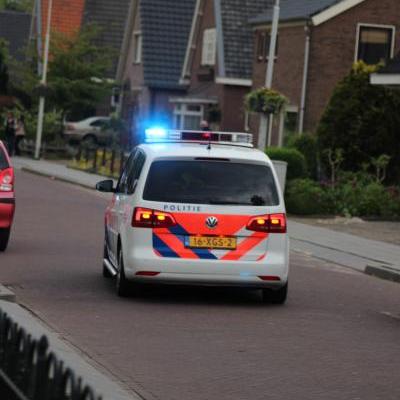Police photographer (Politiefotograaf)
Information on this skill...
A police photographer is responsible for photographing objects, people and evidence. The reason for this is mainly the recording of possible evidence or the creation of visual material for documentation, such as traces of burglaries, found objects, traffic accidents and crimes. The police have to deal with many different cases and have to record everything carefully, using photography. For example, the police can find stolen jewelry and it can happen that the police cannot find the rightful owner. By photographing the jewelry, the jewelry can be placed on the website of the police in the hope of finding the rightful owner. But even in traffic accidents, it is often important that the circumstances are accurately recorded by means of photos. By properly recording accidents and the circumstances, no ambiguities can arise later on about matters related to the accident. In many cases, the police themselves employ photographers who deal with this. In most cases, the profession of police photographer concerns ordinary employees of the police and not independently working photographers, because the police can take photos themselves. The photos that the police take have a different purpose than the photos, which are taken by ordinary photographers. In the past, the police employed special photographers, who did nothing but take pictures and develop these photos. Also the analog film rolls of traffic cameras were usually developed by these special police photographers. Nowadays, this specific function no longer exists in the police. Nowadays, most police officers, such as detectives, take photos independently, which can be used as evidence. The development of the photos is also no longer necessary, because all cameras work digitally.
The original profession of police photographer does not actually occur anymore. As a police photographer, you are now usually part of the technical investigation, in which capturing traces is the main task. Nowadays, the technical investigation is also called forensic investigation. Forensic research does not only relate to photography, but photography is an important part of forensic research. Forensic investigation relates to trace research for criminal investigation. As a police photographer, you can be responsible for various forms of photography. Think, for example, of suspect photography, aerial candle photography, trace photography and forensic photography. In addition, the police use photography to record traffic accidents or to photograph detected stolen objects. This concerns, for example, jewelry, bicycles or devices. The police can also use photography for educational reasons.
WHAT DOES A POLICE PHOTOGRAPHER DO
A police photographer is a photographer who mainly takes photos as evidence. Consider, for example, the detection of serious environmental crimes from the air by means of an aircraft or helicopter. In addition, a police photographer can use a drone to capture certain situations in a clear way. It's not like a police photographer will photograph just anyone. Think, for example, of victims of crime, who can also be photographed by a medical photographer. Medical photography relates to capturing the external characteristics of individuals. Medical photographers usually work within hospitals. In addition, a registered medical photographer can work as an entrepreneur. Another name for police photographer is nowadays also called forensic photographer. A forensic photographer can also photograph personal injury for the police.
WHAT DOES A POLICE PHOTOGRAPHER DO:
TRAINING TO BECOME A POLICE PHOTOGRAPHER
There are no specific training opportunities to work as a police photographer. However, there are training opportunities for the profession of photographer at both MBO level and hbo level. At Mbo you can start with the photography employee training at level two, and then follow the MBO photography course at level four. The training to become a photographer through the Mbo school will usually take four years and prepares you as a photographer. If you want to learn even more afterwards, it is best to follow the private hbo education at the photo school. The direction of photographic design can be followed both in a two-year study and in a four-year study. During the programme you will also work and, depending on the chosen study, go to school one or two days a week for the theory. During the photographer training, attention is paid to the following subjects: portrait photography, lighting, editing, analog techniques, digital techniques, camera technique and creativity. But of course you also learn to work with the most famous photo programs to be able to edit your photos. As a photographer, the computer nowadays plays an important role within the profession. After your education, there are various specializations possible as a photographer that you can focus on, depending on your own wishes as a photographer. In addition, there are also plenty of external training institutes where you can follow a course. Accounting is also important as an entrepreneur.
COMPANIES WHERE A POLICE PHOTOGRAPHER CAN WORK
A police photographer usually works as a police officer. Think, for example, of police officers, detectives or detectives. A forensic photographer can also work for the police. In addition, a forensic photographer can work for the judiciary, private investigation agencies, personal injury lawyers and for freelance pathologists. The profession of police photographer therefore occurs in different ways.
COMPETENCES POLICE PHOTOGRAPHER
The competences of a police photographer cannot be clearly defined, because the profession of police photographer nowadays occurs in different ways. In addition, photographing can be an addition to the usual activities. A forensic photographer will have to have different competencies than an ordinary police photographer. In general, a police photographer will need to have sufficient professional knowledge of photography. Communication is also usually an important competence. In addition, it is important to take clear and relevant photos that can actually be used within the investigation. Generally important words are insight, sensitivity, professionalism, collaboration, consultation, archiving, organizing and planning.
LABOUR MARKET PERSPECTIVE AND CAREER OPPORTUNITIES AS A POLICE PHOTOGRAPHER
The labour market perspective of a police photographer is not very big nowadays. In addition, photographing can be an addition to ordinary police work. A police photographer who works full-time should in most cases be regarded as a forensic photographer. As a police photographer, there are generally no real career opportunities.
TERMS OF EMPLOYMENT AND SALARY POLICE PHOTOGRAPHER
There are no examples of the working conditions, because police photographers can work in different ways. It is also not possible to give a salary indication for this profession, because it concerns very specific activities. For a possible salary indication, see the more specific professions.
The content on this page has been automatically translated from the Dutch language. For this reason, texts and videos on this page may contain small errors.
Lesen Sie diese Informationen auf Polizeifotograf auf Deutsch.
Lea esta información sobre Fotografo de la policia en español.
Lees deze informatie over Politiefotograaf in het Nederlands.
Mijnzzp.nl


